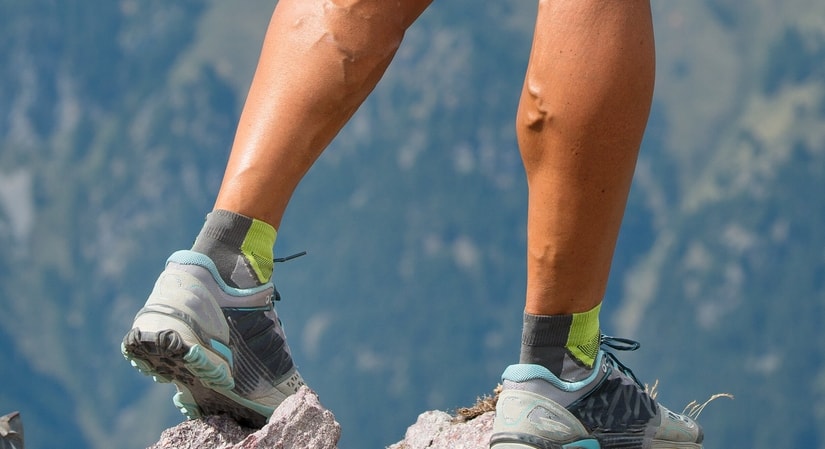There are certain risk factors for varicose veins which make it more likely that you may suffer from vein problems at some stage in your life. Unfortunately being a woman is right up there at the top of the list.
Age is another risk factor – over the age of 60 as an American woman you have a 70% chance of suffering from varicose veins and if you have been pregnant more than once and have vein problems in the family the risks are even higher.
If you are wondering how to prevent varicose veins – the answer is to focus on the things you can control rather than worrying about the things you can’t – like your genes or past pregnancies.
Most of these things we can’t do anything about – but being overweight and having to stand or sit for long periods of time in your job raise your risk level for leg veins of any sort including varicose veins.
If you sit or stand for long periods – try to move around as much as possible. Take the weight off your feet and elevate your legs whenever you can.

Exercising your legs
Get plenty of exercise outside of work – especially leg exercise like Demi Moore that uses your calf muscles like cycling, swimming, running or brisk walking. The calf area is important in pumping the blood back up to the heart and keeping your vein valves functioning well.
Varicose veins arise from a condition known as venous insufficiency. Without regular exercise involving your calf area – you will make the risk of venous insufficiency much worse. Even moving around as much as you can at home will keep the blood moving in your lower leg area.
House work can be good leg exercise – using the vacuum cleaner, running up and down stairs, tidying the yard – all these activities can help. Try to do more running around than you need to during the day – it helps keep the blood circulating and stops the pooling of blood in the lower legs.
Extra support for legs
Give your legs extra support when you are sitting or standing – use support hose or compression stockings.
Compression stockings are thick, tight elasticated leg wear – the sort you can buy for long haul flights to help prevent deep vein thrombosis or DVT and often prescribed for patients after varicose vein surgery.
Compression stockings are pretty ugly but you can hide them away under your jeans, leggings or opaque tights and no one will know.
Support hose are a kind of cosmetic alternative to compression stockings – don’t expect them to do the same job or offer the same kind of support for your lower leg area. Their advantage is they look better worn with skirts and can be undetectable – better than nothing but nowhere near as good as compression stockings for leg vein support.
It may not be glamorous but if you think you’re at risk of getting varicose veins you should avoid high heels or shoes that strain your lower legs and calf area. Think of it this way – what would you rather have – glamor shoes or varicose veins?
What you eat matters
You also have to watch your weight – the closer you are to a perfect BMI the less strain you put on your vascular system and the less your risk of venous insufficiency developing. Obesity is a major risk factor in any form of vascular disease – including leg veins.
A healthy diet has a big part to play in keeping your veins healthy and there are some key nutrients, vitamins and minerals that matter more than others in terms of strengthening vein walls and connective . Find out what you should be eating and follow a healthy vein diet in future.
You may not be able to completely prevent varicose veins but you can make them less severe and give yourself a much better chance of getting a successful outcome for any treatment you go for.





